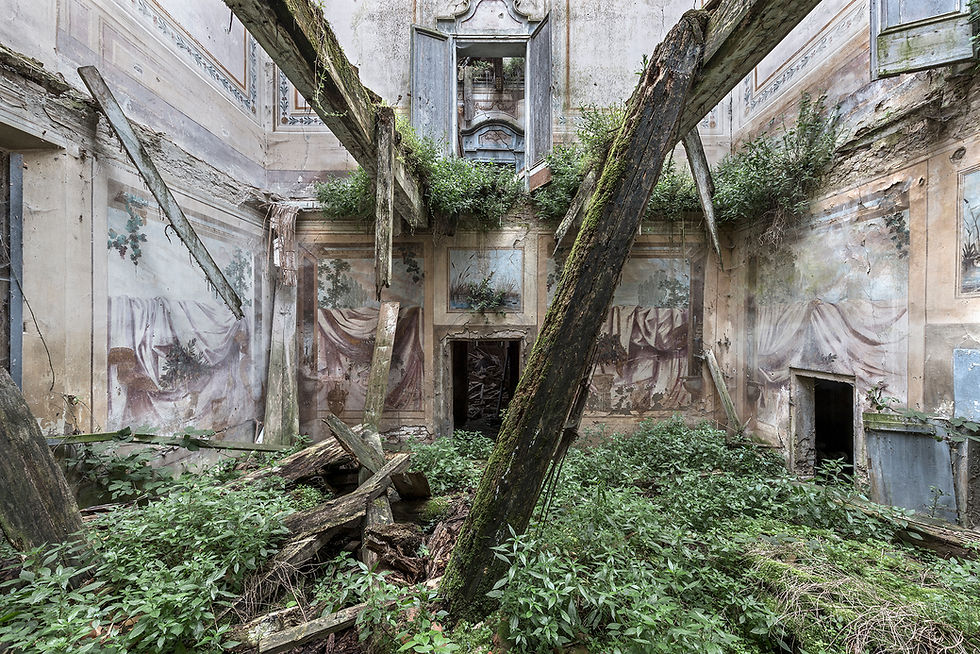Beauty
- Dave Macey

- Apr 6, 2018
- 2 min read

Between Nowhere & Never: Photographs of Forgotten Places
Beauty. It is enchanting, mesmerising and hypnotic. It can drag the viewer into the image and hold their attention through what can seem to be magical spellbinding.
This photograph by Reginald Van de Velde falls into this category. Visually, it is stunning. The immense detail captured in the image is only possible through using large format and shows the intricacy of the leaves, vines and wood. The colours work extremely well, with the faded pinks and muted blues complementing the greens and browns of nature. The composition has also been thoroughly thought through, with the beams and walls providing lines to give a sense of perspective and to all be centring to the same vanishing point. Visually, this image is a feast that attracts, entices and enthrals the viewer.
But is this all there is to beauty? Is it just a reliance on visual stimulus for something to be beautiful? After all, there is the old adage that beauty is skin deep. If we take this to be true, does it mean that beauty is only superficial, that a scratch beneath the surface will reveal something other than beauty?
Working on the assumption that beauty is skin deep, then it would be possible to make virtually anything look beautiful. For instance, if a photograph of a landscape was to follow the same pattern as the above photograph, i.e.: good composition, high detail, balanced colours, then any landscape cold be made to look beautiful. Indeed, it can be seen that if a landscape contains these elements then it is a successful image, a high-quality image, something that has taken skill and judgement to create.
And it is here where the problem lies. It is with the use of skill and judgement that beauty has been created. To use judgement to create beauty requires the use of values and those values are created through the person’s life history, thoughts, influences and ideas. For instance, part of the concept of figurative beauty in the western world is to be slim, whereas in Asia the opposite is true, that the value of a more rounded figure is more desirable because it is a sign of good living. Differing values can even be seen closer to the European history of art when considering the differences between the Northern and Southern Renaissances of the 14th-16thcenturies. The North preferred a more realistic and natural depiction, with more emphasis placed on producing a realistic and natural landscape, whereas the South preferred a more fantastical edge, with nymphs, mythical creatures and angels flying overhead.
But to say that beauty is only skin deep, that it is a matter of arranging the objects of the subject matter in a certain way will make it beautiful, seems to fall short of the mark. For instance, this doesn’t account for the attraction the viewer feels towards beauty, or of why placing one object near or far from another creates beauty. It doesn’t answer the big question, the big question that is hiding behind the scenes, the question that only has three letters.
Why?



Comments